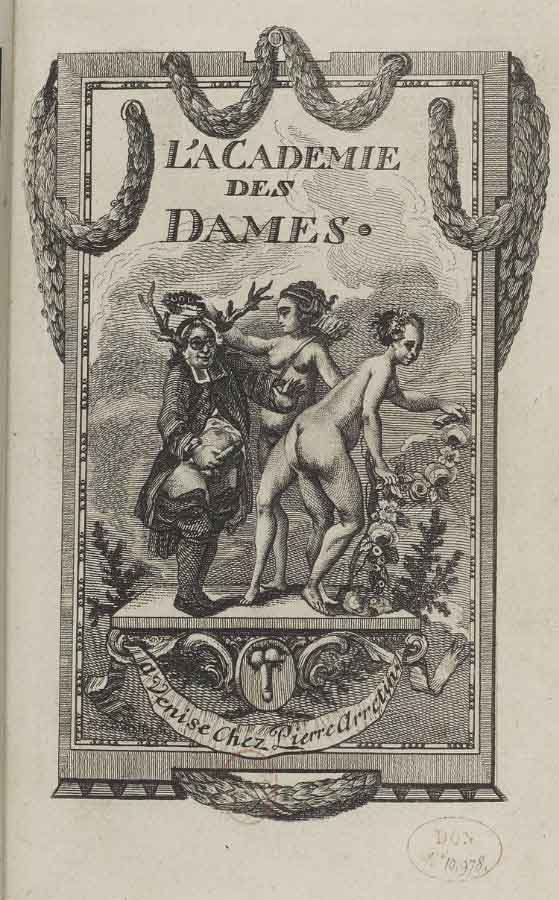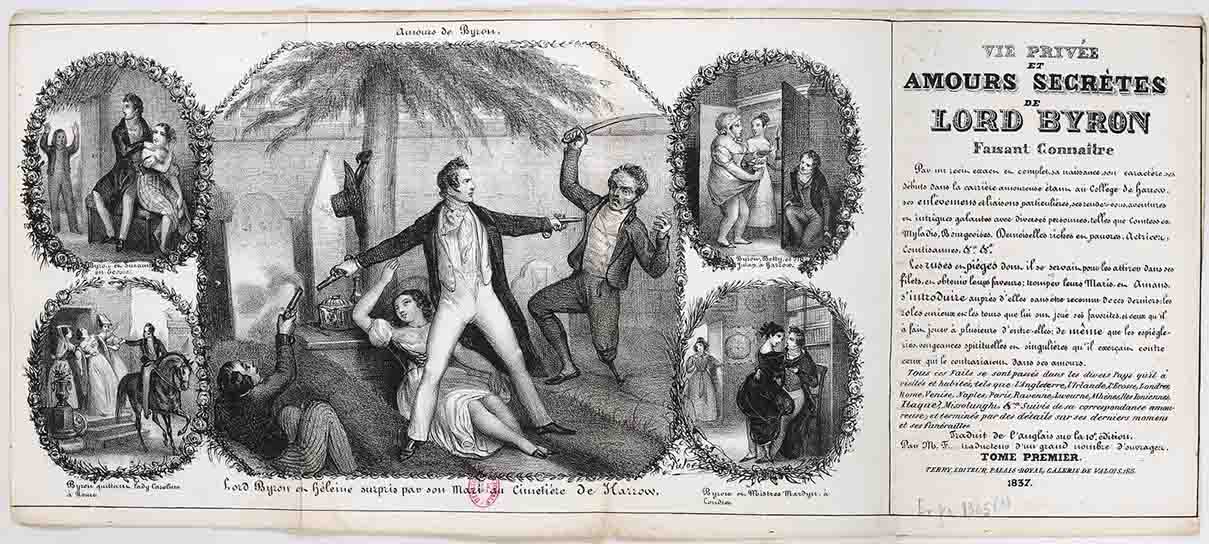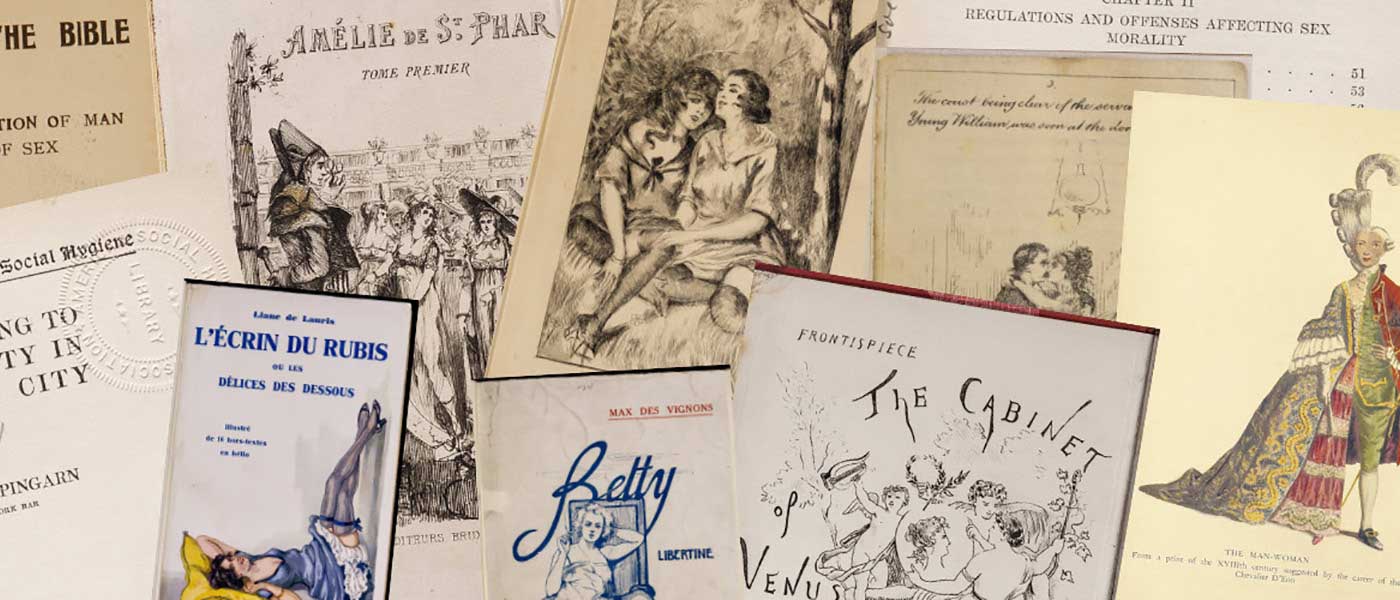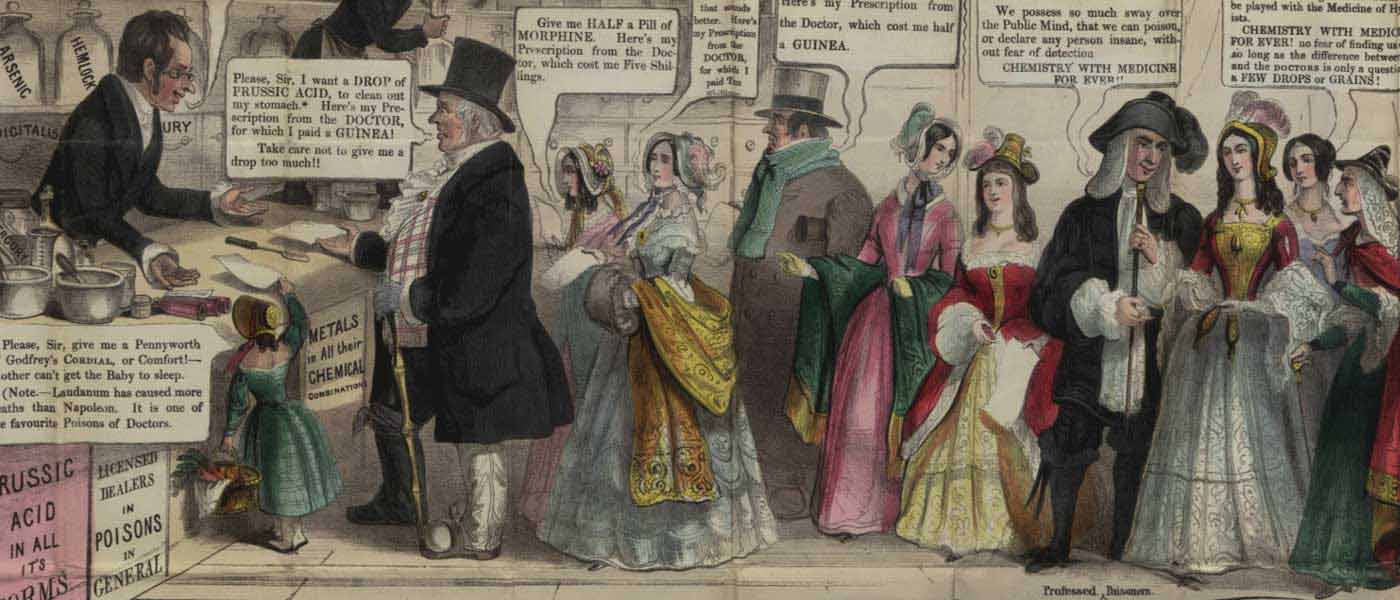ONE OF THE MOST FAMOUS PRIVATE CASE COLLECTIONS IN THE WORLD
The fifth part of Gale’s Archives of Sexuality and Gender series, L’Enfer de la Bibliothèque nationale de France, provides access to one of the most storied and sought-after private case collections in the world. The name alone invokes visions of damnation and moral ruin. L’Enfer (which translates as “Hell” or “Inferno”) refers to the shelf mark given to the collection which was created in the 1830s to protect and isolate works that were considered contrary to the morals of the time. As with other private cases, the entire collection was kept in a locked section of the library because of the erotic or pornographic character of the works, as well as their rarity and value.
While the content in the collection was withheld from many readers in the past, the creation of this private case is to society’s benefit today, as it meant the content, dating from the 1530s to 2010s, was safeguarded for posterity. Today, L’Enfer is one of the most famous Private Case collections in the world.
COLLECTION CONTENTS
L’Enfer is made up of more than 2,400 literary printed works. Around 950 additional items come from an appendix to the printed books of l’Enfer called Flagellation. Between the 1880s and the 1930s, an editorial subgenre flourished in France: the novel de flagellation, a specialised branch of erotic literature. In this context, "passionate flogging" is a sexual perversion consisting of experiencing an erotic pleasure to be whipped. The Flagellation collection in this archive consists of literary works on spanking, caning, and whipping.
LANGUAGES
Documents will mainly be in French, with some titles in English, German, Spanish, and a smattering of other languages.
VALUE OF THE ARCHIVE
As one of the premier private case collections in the world, l’Enfer is much sought after. In an article about an exhibition of l’Enfer at the BnF, Elaine Sciolino of the New York Times wrote the following about the significance of these items:
“The handwritten manuscript of the Marquis de Sade’s novel “Les Infortunes de la Vertu” (“The Misfortunes of Virtue”) is under glass here, as are seventeenth-century French engravings of “erotic postures”; English “flagellation novels” exported to France in the late nineteenth century; Japanese prints; Man Ray photographs; and a police report from 1900 that compiles the addresses of Paris’s houses of prostitution and what they charged. Sadism, masochism, bestiality, inflated genitalia and the most imaginative sexual fantasies and athletic poses are given their due.”The ability to digitally cross-search and compare l’Enfer with the British Library’s Private Case (the third part of Gale’s Archives of Sexuality and Gender series) will be of significant benefit to researchers. Both private cases are extremely important to this research area, expanding our understanding of sexual history, developing views on sexuality, the policing of sexuality and the nature of titillation throughout history.
Click here to watch a series of videos in which Marie-Françoise Quignard, Honorary Curator of the collection, explains the name "Enfer," provides a deep dive into some of the fascinating texts, comments on how the collection (and attitudes towards it) have evolved over time, and finishes by explaining why this collection is of such interest and value to researchers.

Gale Primary Sources | Gale Review Blog
Archives Explored | Gale Digital Scholar Lab | Sign up for Updates

Look Inside
Additional Details
subjects covered
- Early Modern British and European History
- Eighteenth Century History and Politics
- European Studies
- Gender & Women's Studies
- LGBTQ
- History
- Literature
- Nineteenth Century Studies
- Twentieth Century Studies
- Social History
Platform Features & Tools
Term Frequency
Researchers can see the frequency of search terms within sets of content to begin identifying central themes and assessing how individuals, events, and ideas interact and develop over time.
Topic Finder
By grouping commonly occurring themes, this tool reveals hidden connections within search terms—helping to shape research by integrating diverse content with relevant information.
Cross-Search Capability
Search across the content of complementary products in one intuitive environment, enabling innovative new research connections.
Subject Indexing
Subject indexing at article level to aid searching by author, topic and region.







![Women dancing as if in a garden, some above as if floating in the sky
From: Théâtre de l'Ambigu. Le ciel et l'Enfer, 3e acte. Tableau final : les femmes volantes : [estampe] / AH. Val [sig.] (1853)](/binaries/content/gallery/gale-us-en/look-inside-images/primary-sources/archives-of-sexuality--gender/asg5-images/theatre-de-lambigu.-le-ciel-et-lenfer-3e-acte.jpeg)






